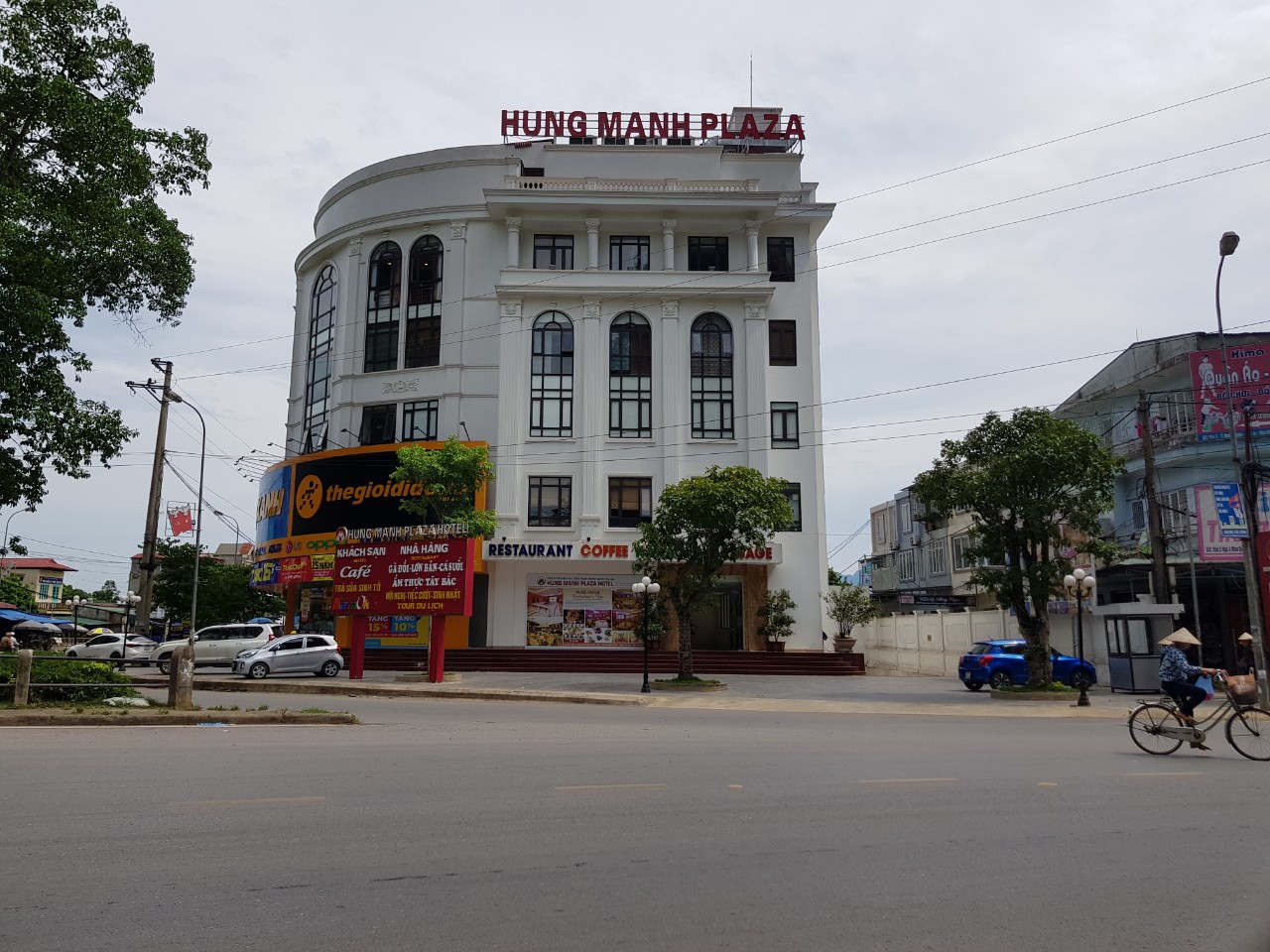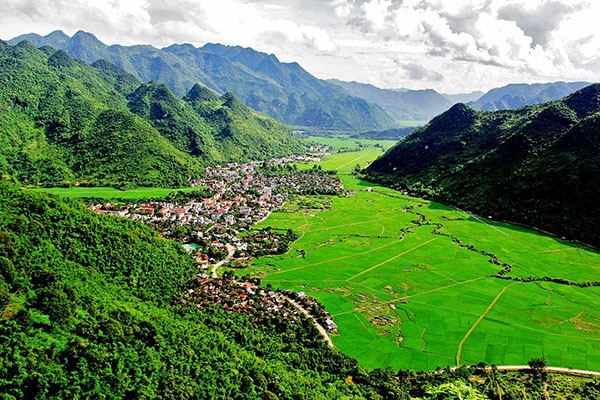Camera tour
Price: Free
Phone:
Time to visit a place: 120 phút
Open Time: 12:00 AM - Close Time: 11:59 PM
Email: ekrj@emai.com
Address: Xa Binh Thanh - Cao Phong - Hoa Binh Thị trấn Cao Phong, Huyện Cao Phong, Tỉnh Hoà Bình
Giang Mo village, Binh Thanh commune, Cao Phong district, located about 10 km from Hoa Binh city, is an attractive destination and attracts many domestic and foreign tourists. The beauty of the mountain landscape and simple stilt houses make visitors feel the peaceful and warm life of the Muong ethnic minority every time they come to Giang Mo.
It is known as an attractive community cultural tourist destination; the peaceful space in Giang Mo village makes it an ideal place for those who want to stay away from the noisy and bustling atmosphere of the city.
When traveling to Giang Mo village, visitors can also visit nearby places such as Monument to victory over tanks of Cu Chinh Lan hero, Muong Cultural Space Museum, Hoa Binh Lake tourist area, or Thung Nai tourist port…
Giang Mo village is located around the valley and at the bottom of the mountain Mo mountain, surrounded by green rice fields and Hoa Binh mountains. Giang Mo village has 140 households of the Muong ethnic group living in wooden stilt houses that keep their pristine appearance and orchards with many fruits.
When traveling to Muong village at the bottom of Mo mountain, visitors will enjoy the natural space between the green trees and terraced fields covered with fanciful mist; hear water murmuring midway through the sky; listen to the gentle and elegant song that resounding with a new cup of fragrant wine and experience a true dear and close farmer's life.
Walking on the winding road along the mountainside around the village, visitors can feel the peaceful life in the mountains and can learn the customs, habits and daily life of the Muong people.
Agriculture takes the leading position in the production activities of the Muong people, and rice is the main food. Common tillage tools are the wooden plough and the small, single-toothed harrow by wood or bamboo.
When the rice is ripe, people will harvest it, bundle it into clusters, take it home to dry, and put it in the attic. When needed, they take each bunch and put it in a wooden trough, rub the seeds with their feet and then pound them. In farming, the Muong have much experience doing small irrigation.
The highlight that makes Giang Mo village attractive is the turtle-shaped ancient stilt houses (turtle houses) of the Muong people. The stilt house is associated with the customs, practices, and daily life of the Muong people. It was built in a position with its back based on high ground, such as a hillside and mountainside, to receive air and be convenient for hunting and gathering.
The house has three floors, in which the top (attic) floor is for food and household utensils; the middle floor is a place for living and resting; The bottom floor is also known as the basement of the house on stilts for production tools and for keeping livestock and poultry.
On traditional stilts, the Muong people in Giang Mo village still retain their daily routine, and many labor tools produced in the past were made from wood, and bamboo, such as fabric loom, archery, and farming tools, ... Every day, the ethnic minorities here still go to the forest to reclaim wasteland, plant corn, cassava, or go down to the fields to plant and take care of rice. Besides, Muong women here are also very good at knitting, weaving, embroidery and traditional hand-made handicrafts such as bamboo and rattan and brocade fabric to introduce to visitors.
Not only can visitors discover unique cultural features, but visitors to Giang Mo also enjoy the dishes made by the people here. The dishes are products of the mountains or by self-cultivated and raised materials such as Nuong sticky rice, Cam sticky rice, pork, Buffalo meat with leaves, chicken, bitter bamboo shoots, stream fish, and Can wine, ... All The dishes are cleverly arranged on green banana leaves, showing the beauty of the ancient culinary culture of the Muong ethnic group.
Muong people like to eat sticky rice, steamed rice, vegetables, and fish. Cooked rice and vegetables are scooped out and spread evenly to prevent them from being crushed before eating. The presentation of the traditional dishes of the Muong is unique. The foods are presented in a circular shape in the banana leaf tray. Around the circle of banana leaves, there are usually two bowls of pork bone soup cooked with zucchini or banana stalks and two packets of sticky rice placed symmetrically to form the square's four corners. It is a simple layout, suitable for taste, but it still shows the folk belief that "the sky is round, and the earth is square". In particular, the kitchen corner of every Muong family is indispensable for pots of sour bamboo shoots, a food source available all year round. Sour bamboo shoots can be fried with fish, chicken, or duck, sour bamboo shoots stocked with buffalo meat and fish stock, dipped with raw vegetables, or soaked in fresh chili, etc.
Sac Bua song or Xec Bua (meaning Xach Cong) is a big festival of the Muong people that takes place every year on the traditional Tet holiday of the Muong ethnic group. It is a form of folk performance combined with many agricultural rituals to pray for a prosperous new year, fertile land, bountiful crops, good health and good luck.
Phuong Bua is an organization of people who join singing Sac Bua and the number of participants is usually 12 people or more. They are the ones who know how to beat gongs and sing typical songs (Muong folk songs). The time to organize the festival is from the first day of the Lunar New Year onwards, lasting a week, sometimes up to half a month.
Kim Oanh Homestay is in Xom Mo, Binh Thanh commune, Cao Phong district, Hoa Binh province.
Kim Oanh Homestay can accommodate up to 40-50 people with ample stilt space and attractive and diverse culinary services.
Kim Oanh Homestay is always ready to welcome and serve. For more information, please get in touch with phone number: 098.3747.055.
Bao Chieu Homestay is located near the bottom of Mo mountain in XOM MO, Binh Thanh commune, Cao Phong district, Hoa Binh province.
Bao Chieu Homestay can serve 50 guests simultaneously in a traditional stilt house of the Muong ethnic group. Bao Chieu Homestay has airy space and is surrounded by terraced fields, year-round orchards full of fruits, and murmuring streams all year around.
Bao Chieu Homestay is always ready to welcome and serve. For more information, please get in touch with phone number: 039.955.4475



_636886964294631574.jpg)

_636886964294631574.jpg)




_636886964294631574.jpg)

Distance: 7.50 km
Distance: 7.53 km
Distance: 9.80 km
Distance: 16.29 km
Distance: 16.92 km
Distance: 17.34 km
Distance: 17.29 km
Distance: 0 m
Distance: 5.33 km
Distance: 7.03 km
Distance: 7.40 km
Distance: 7.41 km
Distance: 7.71 km
Distance: 9.56 km
Distance: 13.14 km
Distance: 14.03 km
Distance: 16.26 km
Distance: 16.46 km
Distance: 16.48 km
Distance: 16.92 km
Distance: 18.72 km


